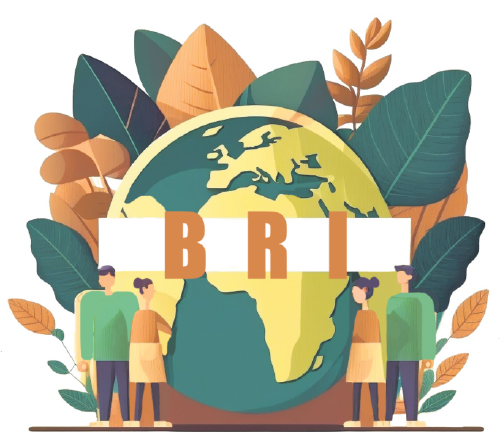New development era ahead for both BRI and BRICS
By Martin Lampter | China Daily | Updated: 2023-11-11 08:57

The launch of the Belt and Road Initiative a decade ago marked another milestone in China's development journey. The question is: What is the Belt and Road Initiative's role in international relations, particularly China's relations with other countries and organizations now and in the future?
The BRI has come a long way since its launch. That more than 150 countries and 30 international organizations have signed more than 230 cooperation agreements with China under the initiative means countries, which combined account for three-quarters of the world's population, are involved in the initiative. Many infrastructure projects and forms of cooperation have already become a reality in Asia, Europe, Africa and Latin America in the first decade of the initiative's existence.
The initiative is expected to help China to realize the second centenary goal of building a modern socialist country and achieve the Chinese Dream of national rejuvenation by the middle of the century, with 2049 being the 100th anniversary of the founding of the People's Republic of China.
There are already indicators of why this might be the case. One is the outcome of the domestic development policy that led to the eradication of absolute poverty at the end of 2020. The BRI is moving in the same direction as the Global Development Initiative to eradicate absolute poverty in China, and its aim is to raise the living standards of people around the world.
The BRI is entering a new phase, its second decade of existence. In order to comprehend the initiative's role in this new period, it is important to understand how it will have to cope with a changed international situation. The current situation is different from that when the initiative was launched in 2013. There are at least three reasons for the change.
First, the effects of the global financial crisis and the subsequent structural changes only began to be felt in the United States and other Western countries after 2016 with the rise of former US president Donald Trump, who imposed ill-advised trade sanctions on China and other countries, with the incumbent Joe Biden administration continuing that strategy.
Second, the COVID-19 pandemic was a stress test and a new experience for countries engaged in global cooperation and competition.
And third, the current armed conflicts have shown the urgency of diplomacy and judicious trade negotiations with international partners around the world.
In this new phase of heightened tensions, it is important how the most vulnerable countries, that is, developing ones, stand up. Developing countries have the highest number of poor people and people who are at risk of falling into poverty. That is why development policies play a crucial role in economic growth and social progress, whether it is a development policy such as the BRI or an international cooperation-cum-development policy promoted by BRICS (Brazil, Russia, India, China and South Africa — which will be joined by Argentina, Egypt, Ethiopia, Iran, Saudi Arabia and the United Arab Emirates on Jan 1).
In this situation, developing countries are reinforcing each other. The inclusion of six more countries — from the Middle East, Africa and Latin America — in BRICS will boost the group's cooperation with other countries and pave the way for the BRICS member states to use their own currencies for intra-BRICS Plus trade, thus reducing the dominance of the US dollar and other Western currencies, and contributing to the development of the Global South.
The need to strengthen themselves prompted the old BRICS member states to include more countries to extend the grouping's influence across the world. But we should keep in mind that this expansion will not continue to the extent of including all the developing countries in BRICS Plus.
The developing world is currently represented the broadest in the G77. The more focused BRICS Plus organization represents an important core of the most influential developing countries on their respective continents. The BRICS Summit in Johannesburg, South Africa, from Aug 22 to 24 and the G77 Summit in Cuba on Sept 15-16 demonstrated these facts.
It is in this context that China is promoting the BRI, whose goal is to improve infrastructure connectivity. China sees itself as the largest developing country in solidarity with other developing countries and with respect for the plurality of different civilizations and political-economic systems as a necessary condition for peaceful coexistence and development cooperation in order to build a community with a shared future for mankind.
The BRI's aim is to be beneficial for both developing and developed countries, as it is proving to be in Europe, Latin America, Africa and Asia, with its contributions to empowering the multilateral world.
The author is a political economist who has worked at universities mainly in Southern and Central European countries and in South America. Now he works at the University of the Left. The views don't necessarily reflect those of China Daily.
If you have a specific expertise, or would like to share your thought about our stories, then send us your writings at opinion@chinadaily.com.cn or comment@chinadaily.com.cn.
























